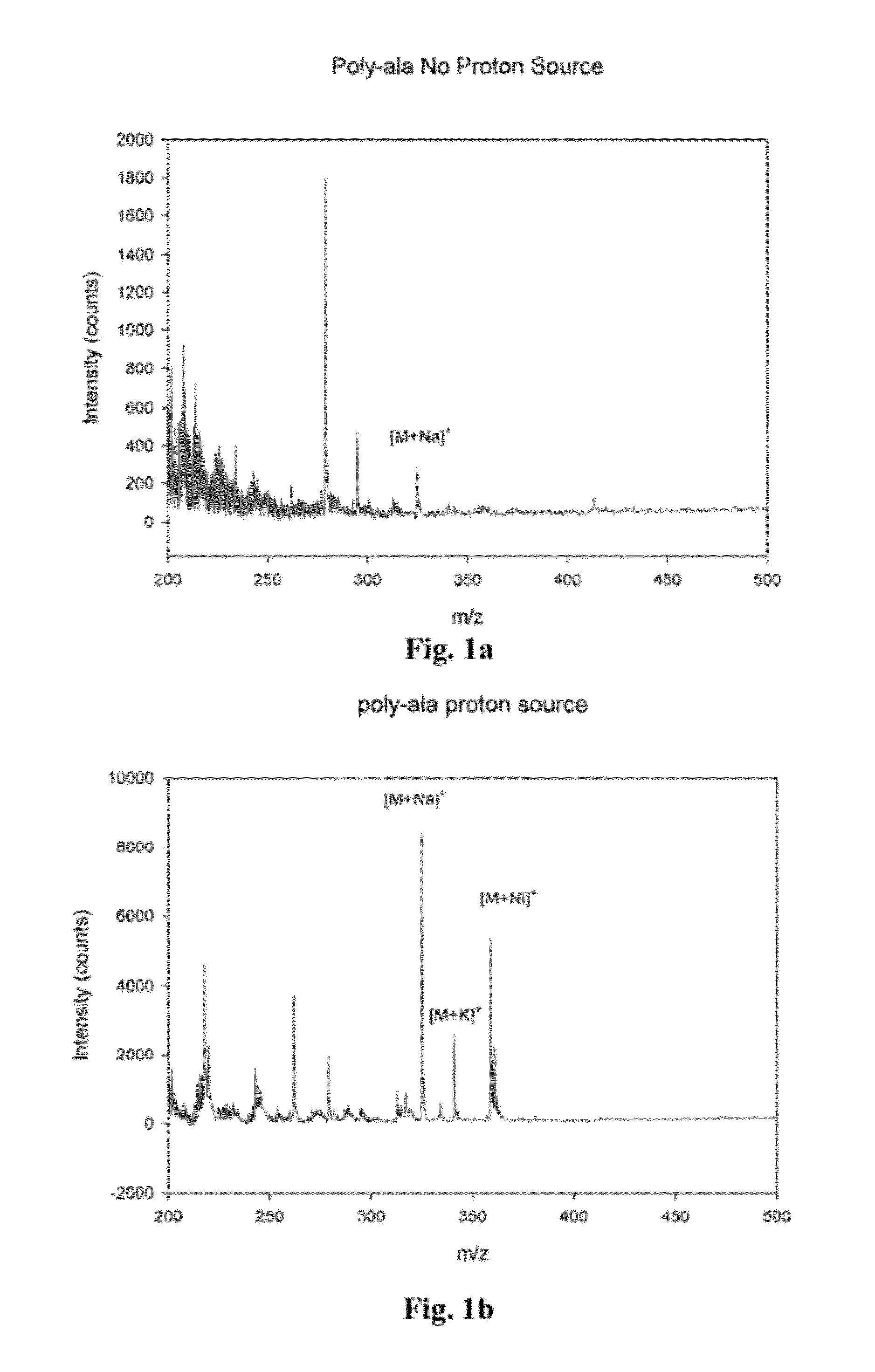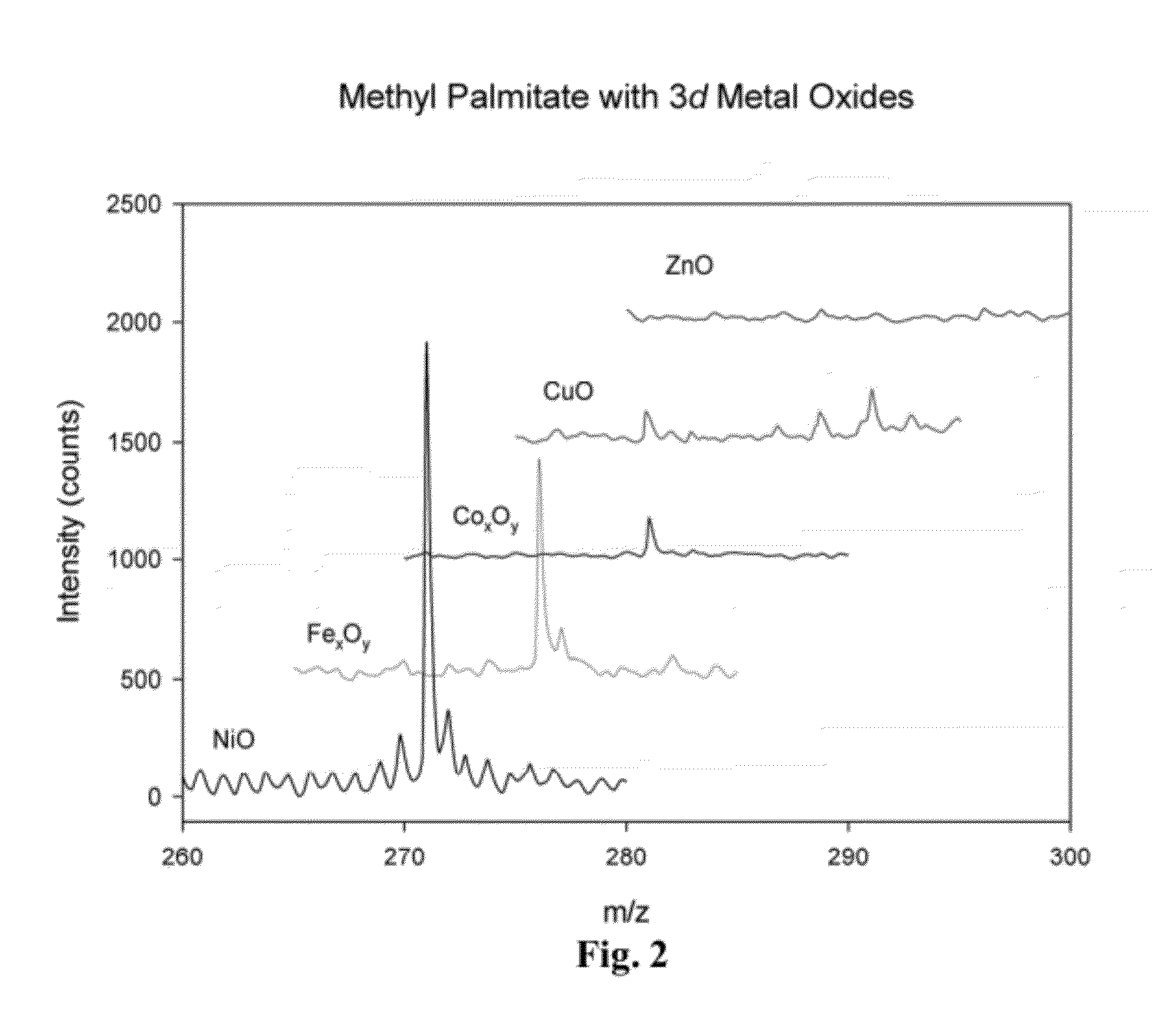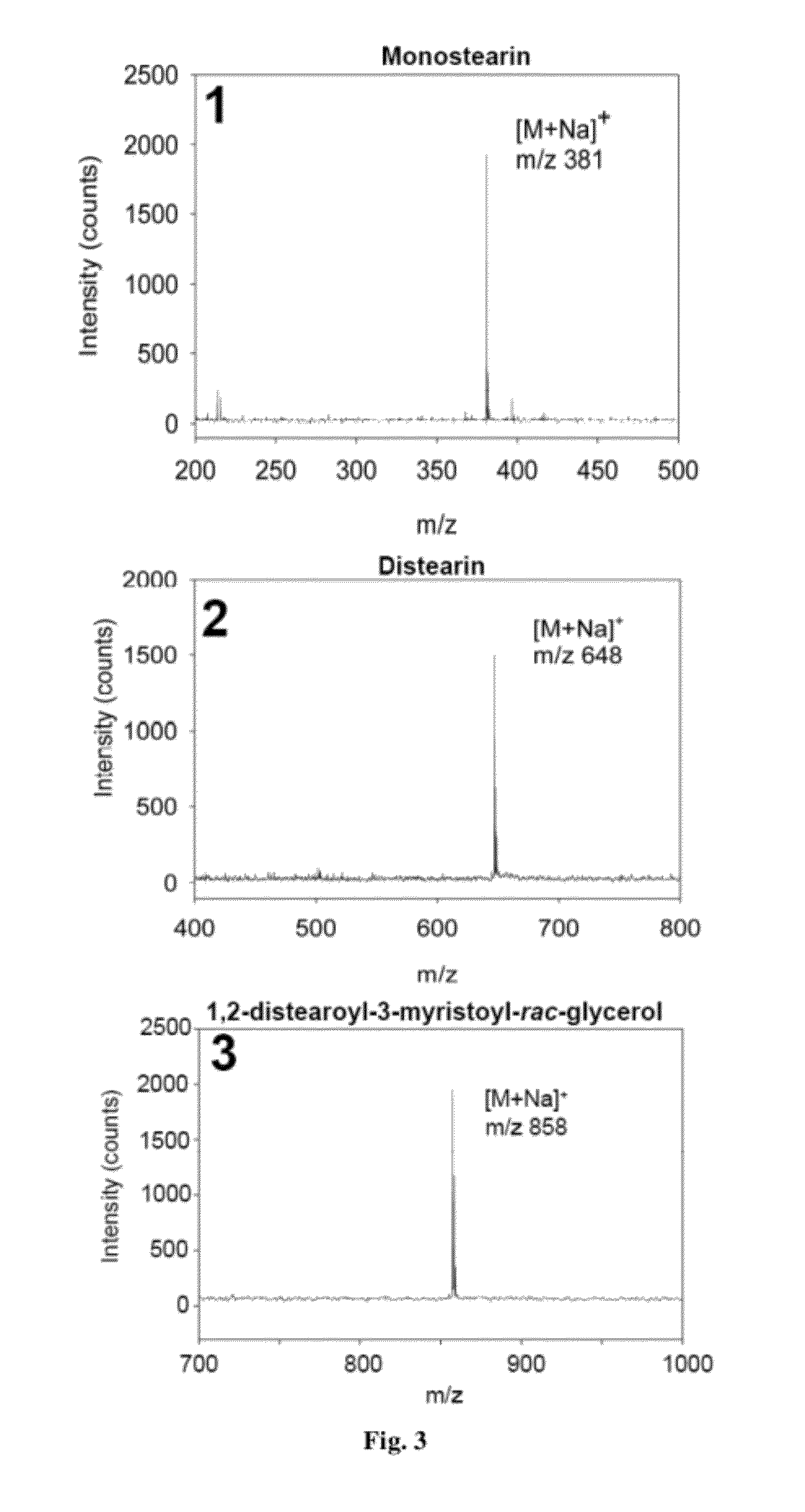Metal oxide laser ionization-mass spectrometry
- Summary
- Abstract
- Description
- Claims
- Application Information
AI Technical Summary
Benefits of technology
Problems solved by technology
Method used
Image
Examples
example 1
[0097]Metal oxides with similar band gaps (electronic structures) were used to analyze the C16 FAME methyl palmitate. Analysis was carried out by suspending metal oxide particles ˜100 mg / ml in hexane and spotting on a traditional MALDI target. Methyl palmitate was then spotted on top of each dried metal oxide and dried. In other embodiments, the metal oxide and analyte may be combined prior to spotting on the target. In further embodiments other compounds may be added, for example, organic reagents, such as a basic organic reagent. The performance of each metal oxide was based on the calculated signal to noise ratio of the [M+H]+ ion.
[0098]Comparative spectra for four metal oxides is depicted in FIG. 2. Table 3 illustrates the signal to noise of different metal oxides, their exposed facets, their d-spacing, and band gap. NiO had better signal to noise than other metal oxides. Without wishing to be limited to any theory or mode of action, a decrease in band gap may result in more eff...
example 2
[0099]The initial step in the analysis involves spotting a metal oxide suspended in hexane onto a stainless steel MALDI plate. Solutions of lipids in hexane were then spotted onto the dried metal oxide spot. The parameters used for the mass spectrometer settings have been previously described. FIG. 3 shows the spectra for mono-, di-, and tri-glycerides. Peaks are observed as sodiated adducts [M+Na] for all three compounds. Nickelated ions are observed at higher laser fluences.
example 3
[0100]Similar results to those of the glyceride species, were obtained for polar lipids such as phosphatadyl choline. Fatty acid methyl esters (FAMEs) produced spectra with both the [M+H]+ peak as well as sodium adducts. The spectrum of methyl palmitate obtained with NiO is compared to traditional MALDI using 2,5-dihydroxybenzoic acid (2,5 DHB) as a matrix, and to thermal desorption (bare steel plate). The strongest peak in the traditional MALDI spectrum is the protonated dimer of 2,5 DHB.17 Background peaks were absent in methyl palmitate spectrum obtained with NiO in FIG. 4, however, peaks representing decomposition products are observed below the pseudomolecular ion. Spectra are normalized to be comparable. The peak in spectrum (B) marked with an asterisk is the protonated dimer of 2,5-DHB.
PUM
 Login to View More
Login to View More Abstract
Description
Claims
Application Information
 Login to View More
Login to View More - R&D
- Intellectual Property
- Life Sciences
- Materials
- Tech Scout
- Unparalleled Data Quality
- Higher Quality Content
- 60% Fewer Hallucinations
Browse by: Latest US Patents, China's latest patents, Technical Efficacy Thesaurus, Application Domain, Technology Topic, Popular Technical Reports.
© 2025 PatSnap. All rights reserved.Legal|Privacy policy|Modern Slavery Act Transparency Statement|Sitemap|About US| Contact US: help@patsnap.com



